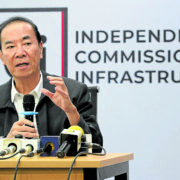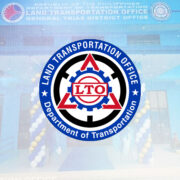New Chinese Year, new you: US-China dynamic
I always tell my clients: anticipate, anticipate, anticipate. Obsess over trends. Put contingency plans in place and be prepared for all major scenarios that can impact your business and the main economies you are operating in. As someone who has worked closely with Fortune 500 CEOs, family business owners from around the globe and billionaire entrepreneurs, I’ve observed first-hand how critical it is to stay ahead of these shifts. This must be part of your corporate strategic planning.
For a lot of businesses, the United States-China dynamic in a transforming global economy is an important one to watch. This dynamic rivalry influences nearly every sector, from technology and finance to supply chains and geopolitics. For CEOs and business owners, understanding the intricacies of this relationship is no longer optional but a necessity. The strategic decisions of these two superpowers dictate trade policies, impact investment opportunities and shape the regulatory landscape across industries. As we usher in a new Chinese year, business leaders must take stock of where this relationship is headed, what risks and opportunities it presents and how best to position their companies for resilience and growth.
The battle for economic and technological superiority
For decades, the United States held the undisputed position as the world’s largest economy and technological powerhouse. However, China’s rapid ascent has challenged this hegemony, creating tensions that manifest in trade wars, technology bans and competitive posturing in international markets. The battle for dominance is no longer confined to traditional economic metrics like GDP (gross domestic product)—it extends into critical areas such as artificial intelligence (AI), semiconductors and renewable energy.
China’s Belt and Road Initiative (BRI) is a testament to its global ambitions, fostering infrastructure projects and trade agreements across Asia, Africa and even parts of Europe. The U.S., wary of China’s expanding influence, has responded with initiatives like the Indo-Pacific Economic Framework, aimed at strengthening alliances and countering China’s economic reach. This tug-of-war presents both risks and opportunities for multinational corporations and family businesses operating in these regions.
In the technology sector, the emergence of AI-driven platforms such as DeepSeek, an advanced Chinese AI model, has raised concerns in the U.S. about the pace at which China is closing the innovation gap. The American response has been swift—sanctions, export restrictions on semiconductor technology and moves to decouple supply chains. This highlights an important lesson for businesses: reliance on a single market or supply chain is no longer a viable long-term strategy.
China+1
Beyond economics and technology, geopolitics plays a significant role in shaping U.S.-China relations. Recent tensions over Taiwan, trade restrictions and military posturing in the South China Sea all contribute to an unpredictable business environment. CEOs and business owners need to be mindful of geopolitical flashpoints and their potential impact on market stability.
For example, companies with manufacturing bases in China face mounting risks due to potential tariffs, export controls and political scrutiny. As a result, many firms have begun diversifying their supply chains, a trend known as “China+1,” where businesses establish manufacturing facilities in alternative locations such as Vietnam, India, or Mexico. While this strategy mitigates risks, it also requires significant investment and careful planning.

Lessons from history: The role of agility in business success
Businesses that fail to anticipate the long-term consequences of U.S.-China tensions may find themselves caught in the crossfire. Similarly, one of the biggest lessons CEOs and business owners can take from this situation is the importance of agility. This means proactively assessing supply chains, diversifying markets and staying ahead of technological trends. Leaders should be prepared to pivot quickly, whether that involves shifting operations to more stable regions or investing in emerging technologies to maintain competitiveness.
The financial sector is another area experiencing turbulence. The increasing decoupling between the U.S. and China has led to regulatory shifts affecting cross-border investments. Chinese companies listed on U.S. stock exchanges face stricter auditing requirements, while American firms operating in China must navigate an ever-changing regulatory landscape. Business leaders must stay informed about these regulatory developments to avoid compliance pitfalls and identify new investment opportunities.
Five to thrive
What are the practical strategies for CEOs and business owners? Given the complexities of the U.S.-China relationship, how can business leaders future-proof their companies? Here are some key strategies:
- Diversify supply chains and market dependencies.
The heavy reliance on Chinese manufacturing is a double-edged sword. While China offers cost advantages and well-established infrastructure, overdependence on any single market creates vulnerabilities. To mitigate risks:
-Explore alternative manufacturing hubs in Southeast Asia, Mexico, or India.
-Establish multi-sourcing strategies to prevent supply chain disruptions.
-Invest in digital supply chain management tools to increase visibility and resilience.
- Stay ahead of regulatory changes.
Both China and the U.S. continue to introduce regulatory changes that impact foreign businesses. CEOs must:
-Work closely with legal and compliance teams to stay updated on trade policies.
-Engage with industry groups and chambers of commerce to anticipate potential shifts.
-Build flexibility into business operations to quickly adapt to new regulations.
- Invest in emerging technologies.
The AI race is heating up and businesses that fail to leverage technology risk falling behind. Key investment areas include:
-AI-driven automation to improve efficiency and reduce costs.
-Cybersecurity measures to protect against increased digital threats.
-Blockchain solutions to enhance transparency and reduce fraud in global trade.
- Strengthen regional partnerships.
The geopolitical landscape is shifting, and businesses must foster strong regional partnerships to navigate uncertainty. Strategies include:
– Forming alliances with companies in stable economies to ensure continuity.
– Participating in regional trade agreements to secure favorable terms.
– Collaborating with government agencies to secure incentives and trade benefits.
- Foster a culture of agility and innovation.
Businesses that remain rigid in their strategies often struggle to survive geopolitical shocks. CEOs should:
– Encourage a startup mindset within their organizations, fostering innovation and rapid decision-making.
– Conduct regular risk assessments and scenario planning to prepare for multiple outcomes.
– Empower leadership teams to make swift, informed decisions in response to external changes.
Tom Oliver, a “global management guru” (Bloomberg), is the chair of The Tom Oliver Group, the trusted advisor and counselor to many of the world’s most influential family businesses, medium-sized enterprises, market leaders and global conglomerates. For more information and inquiries: www.TomOliverGroup.com or email Tom.Oliver@inquirer.com.ph.





















